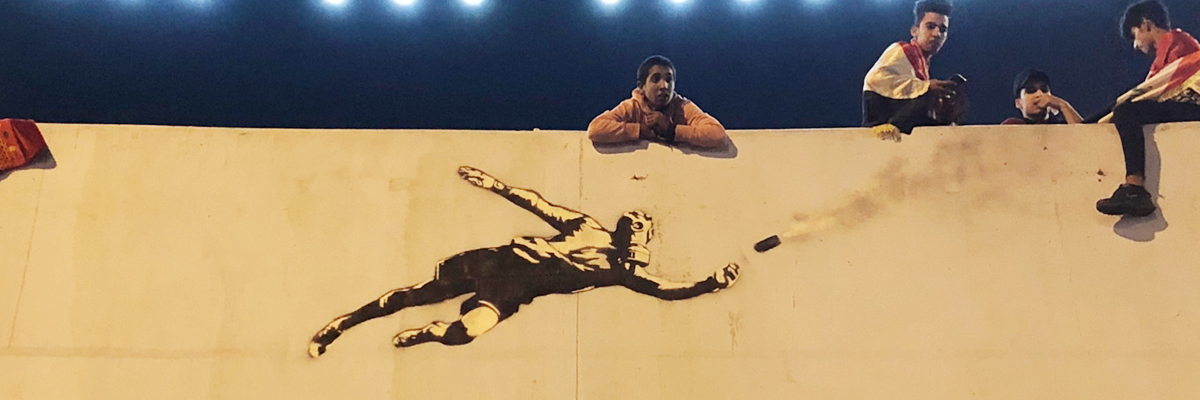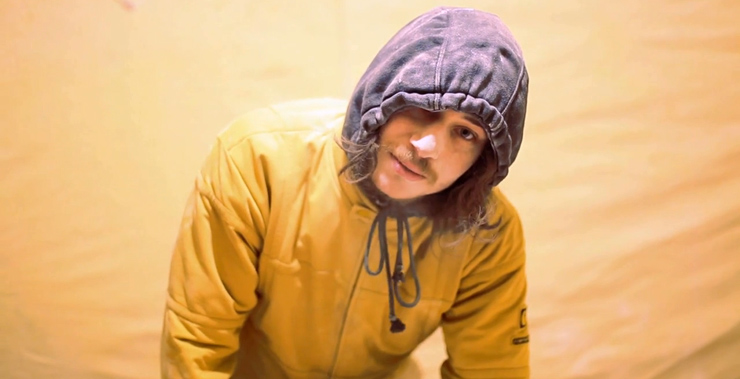Amidst the fusillade of news from the Middle East these days, you may have missed that the young people of Baghdad in Iraq have been demonstrating in the streets against the government. They are fighting for pretty much the same thing that all people in every society eventually fight for – autonomy, fairness, freedom, liberty. Not surprisingly, Street Artists are helping give voice to the aspirations of the people, and possibly inspiration to them as well, with walls to the underpass into Tahrir Square serving as an open-air gallery of murals and slogans
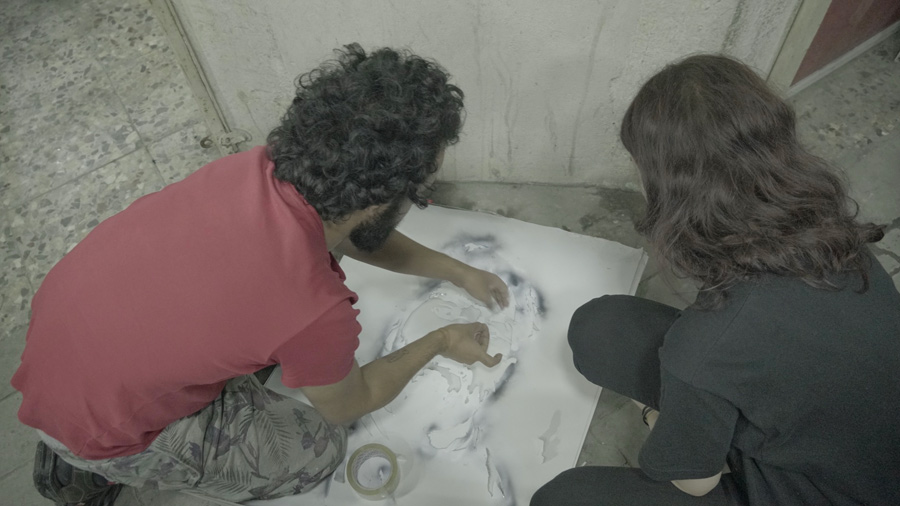
Artist and animator Sajjad Abbas says his artworks on the streets are addressing the desires voiced by the protestors, and giving voice to the fallen. “The main goal of the protest is the motto ‘نريد وطن ‘, which means ‘We want a homeland’,” he says. “It’s a motto that has a deep and clear meaning and indicates how open-minded the protests are. The protesters are also asking to isolate all the parties and to never elect them again.”
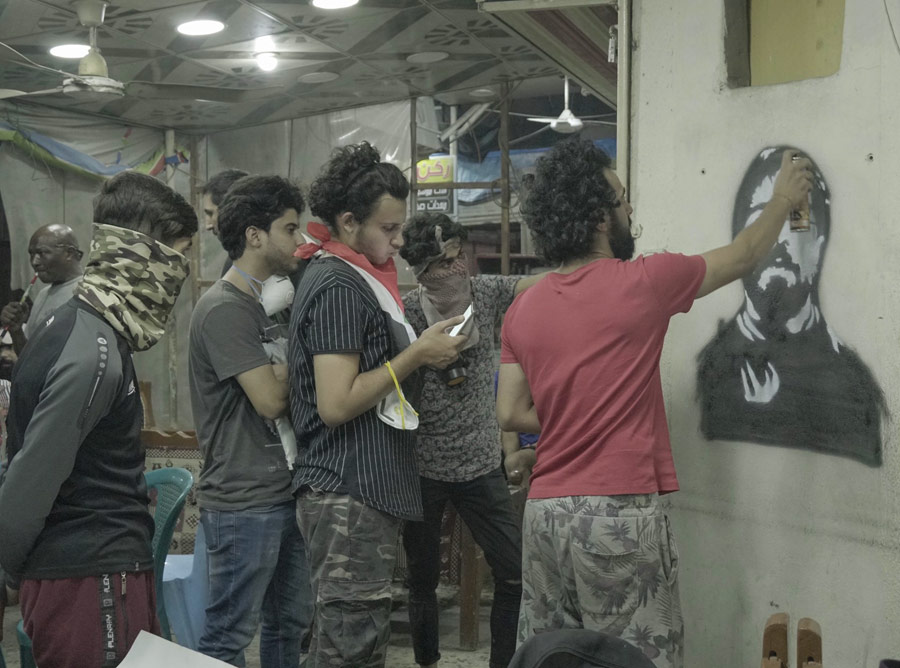
Today we have images from recent protests as well as a few stencils by Abbas. You may recognize a style common in Street Art with political or social critique in cities elsewhere during the last decade and a half. The energy that is evident in these scenes is full of anticipation and emotion, the desire to express serious dissatisfaction that is evident in many sectors. In the disordered street and cafe scenes, you can also see a singularity of determination by some, a collectivity among others.
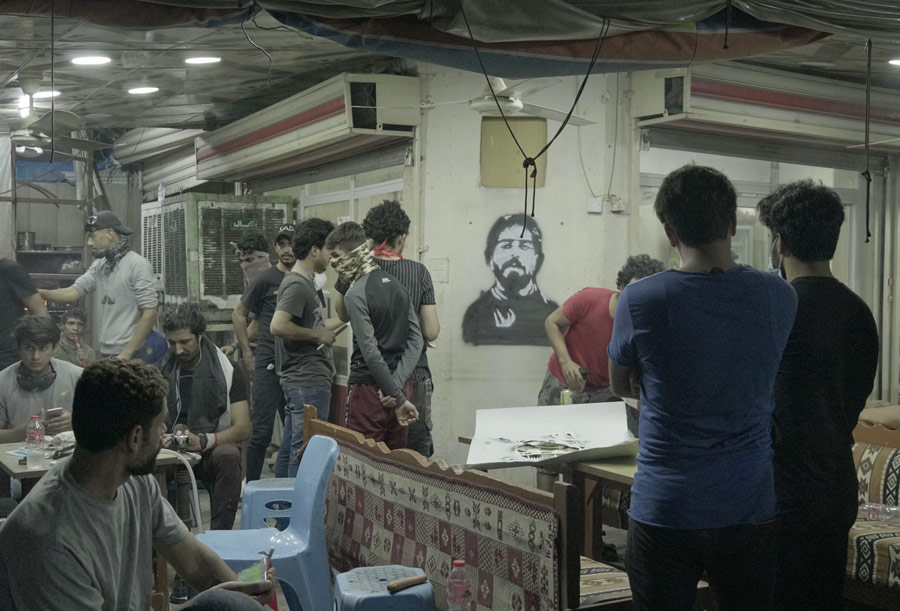
By creating a stencil portrait of one of the leaders who has been killed, a hero is being elevated – along with the values they are thought to have signified. Here you see an image of Safaa al-Sarai, one of the higher-profile activists/protesters whom news reports say was killed in October after getting hit in the head by a smoke grenade. In just a few short months his image on the street is transforming him to that of a martyr in popular culture and in memes – merging with imagery from sports culture as a protective goalie.
In fact, Safaa al-Sarai was a “goalie”, according to an account in the Times of London; “a human buffer armed with a wet sheet to intercept tear gas canisters aimed at protesters. ‘One hit the ground then bounced up into his head. He had a brain injury and was bleeding. They couldn’t save him,’ said his friend Hayder Alaa, a 21-year-old student.”
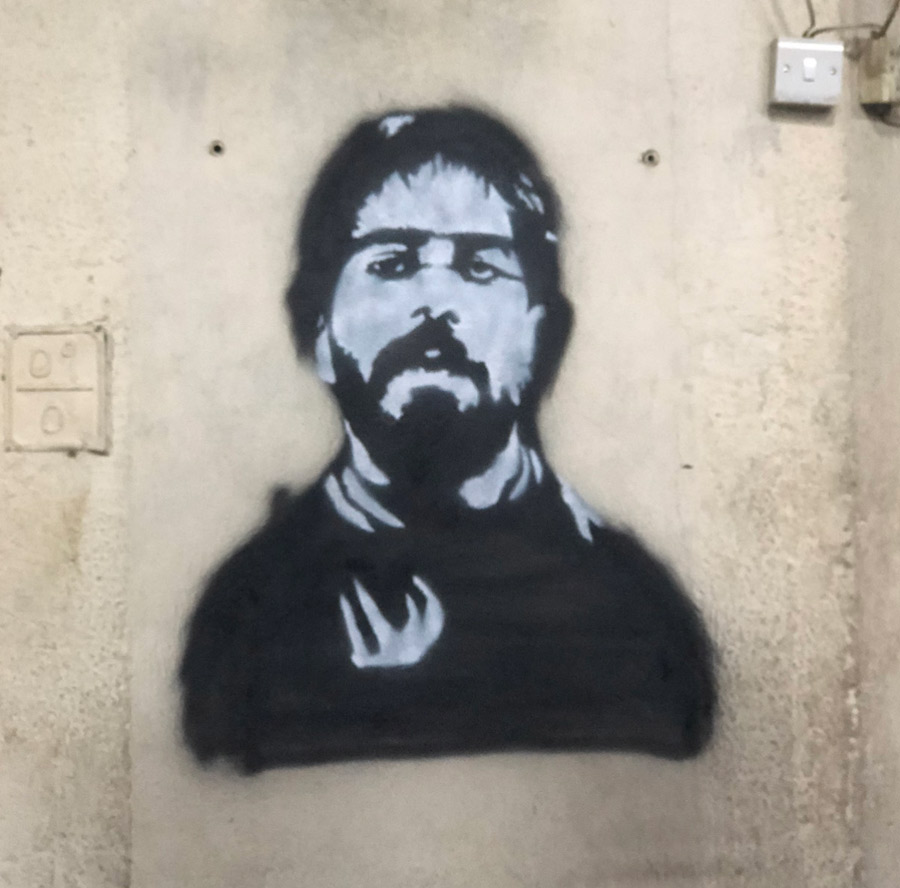
We asked Sajjad Abbas about his experience as a Street Artist in Baghdad during these tumultuous demonstrations and about his opinion of the role of art and artist in the street.
Brooklyn Street Art: Can you describe the protests in Tahrir Square and what issues people are focusing on?
Sajjad Abbas: The protests in Tahrir Square are hard to describe. The young guys went out on the 1st of October in 2019. In the beginning, they were mostly from Sadr City. The government faced the protests during the most intense action and they killed lots of the protesters. They used live ammunition and there were snipers and they took the young guys’ lives.
Through this time, after that, all people were called for protests, a million people marched on October 25, 2019. Together they were protesting about religious and secular topics of many kinds.
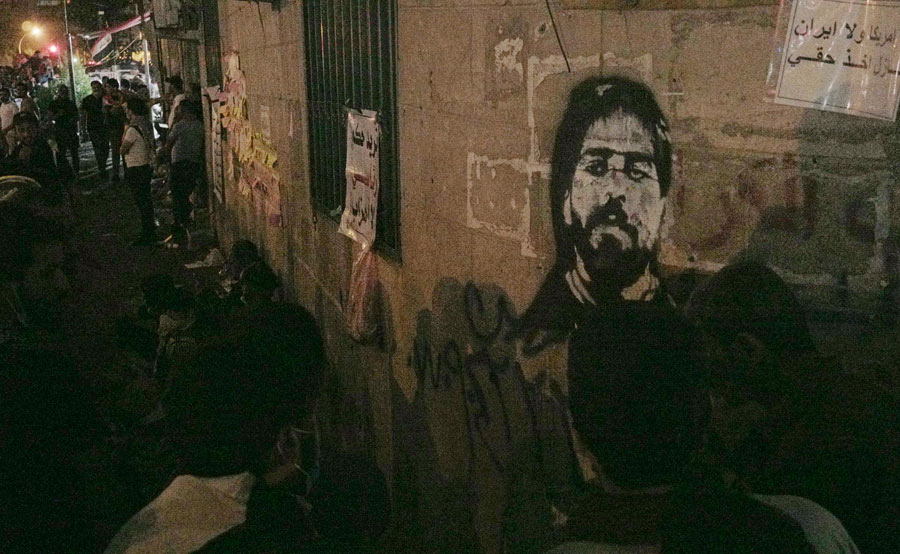
BSA: Are the protesters mainly young people?
SA: They are young guys who are tired of every chain that the politics and the religion men put on the people. They asked for a good life and freedom and presented their opinions to all the religious men and government people. This protest is against dirty government forces and the parties of the murders. Many of the protesters were killed and the government used smoke bombs and flash grenades as a way to kill. They threw these things directly at the protester’s heads, and some were injured pretty seriously, probably causing them a lifetime disability…
So far the government hasn’t answered protesters’ demands, but there has been murder and kidnapping.
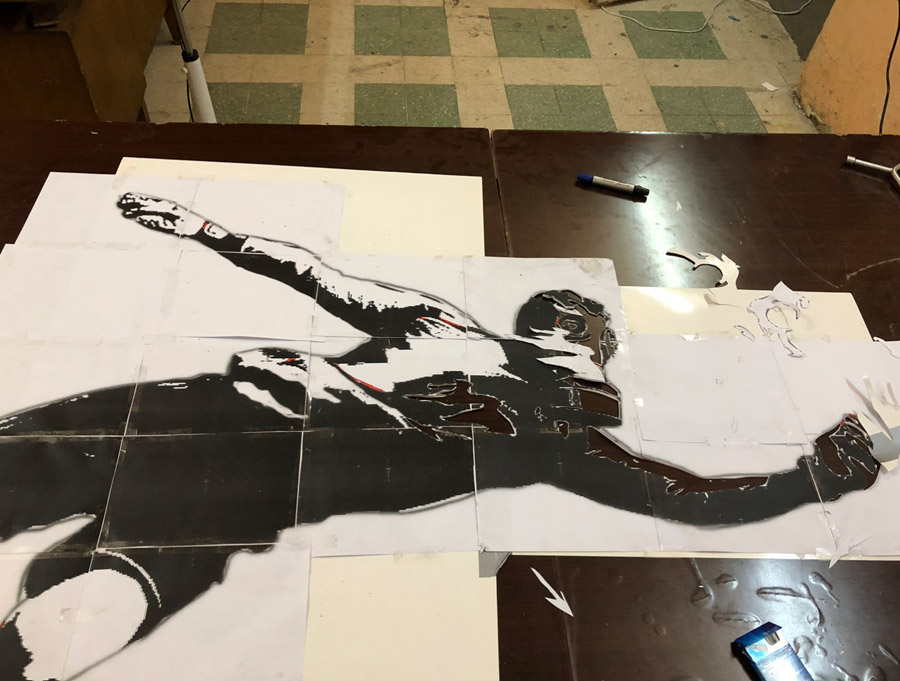
Most of the protesters are the new generation who were born in the early 2000s, but there are also different people from other age groups. What is good about the new protests is that there are also a big number of young females who were also in the protests – and they were in the front lines of the protest.
BSA: What is the name of the person in the stencil art with the beard?
SA: The guy in this picture is Safaa Alsarai. He got killed in the protest after he got shot in the head by a smoking bomb.
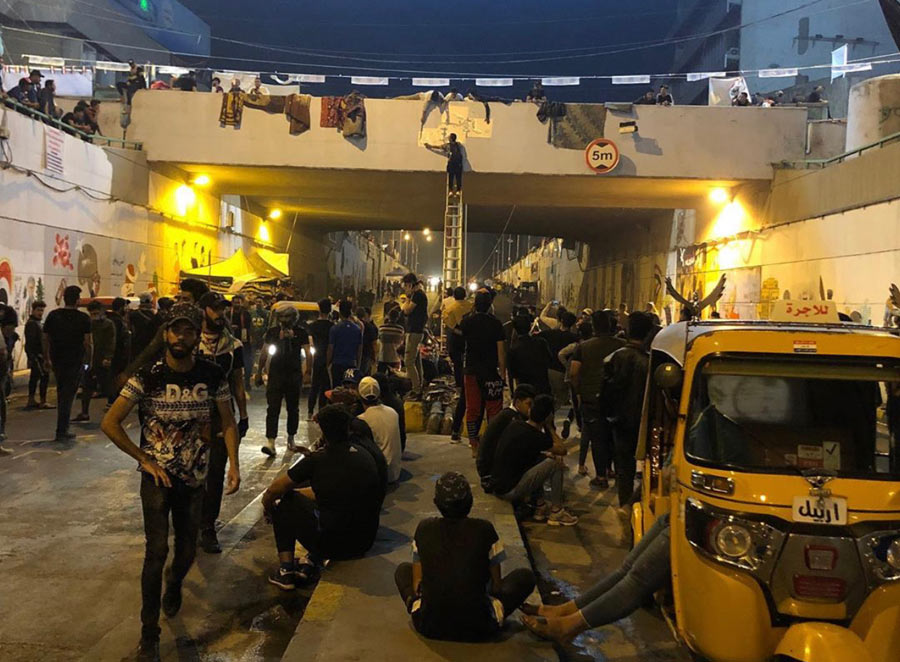
BSA: Why is he important and what does he symbolize for Baghdadi people?
SA: Safaa was a poet who also participated in many of the older protests. He was hoping that Iraq could become unified and be one and he was dreaming about making for Iraq an Iraqi country. Safaa became an icon for the revolution in all the cities in Iraq.
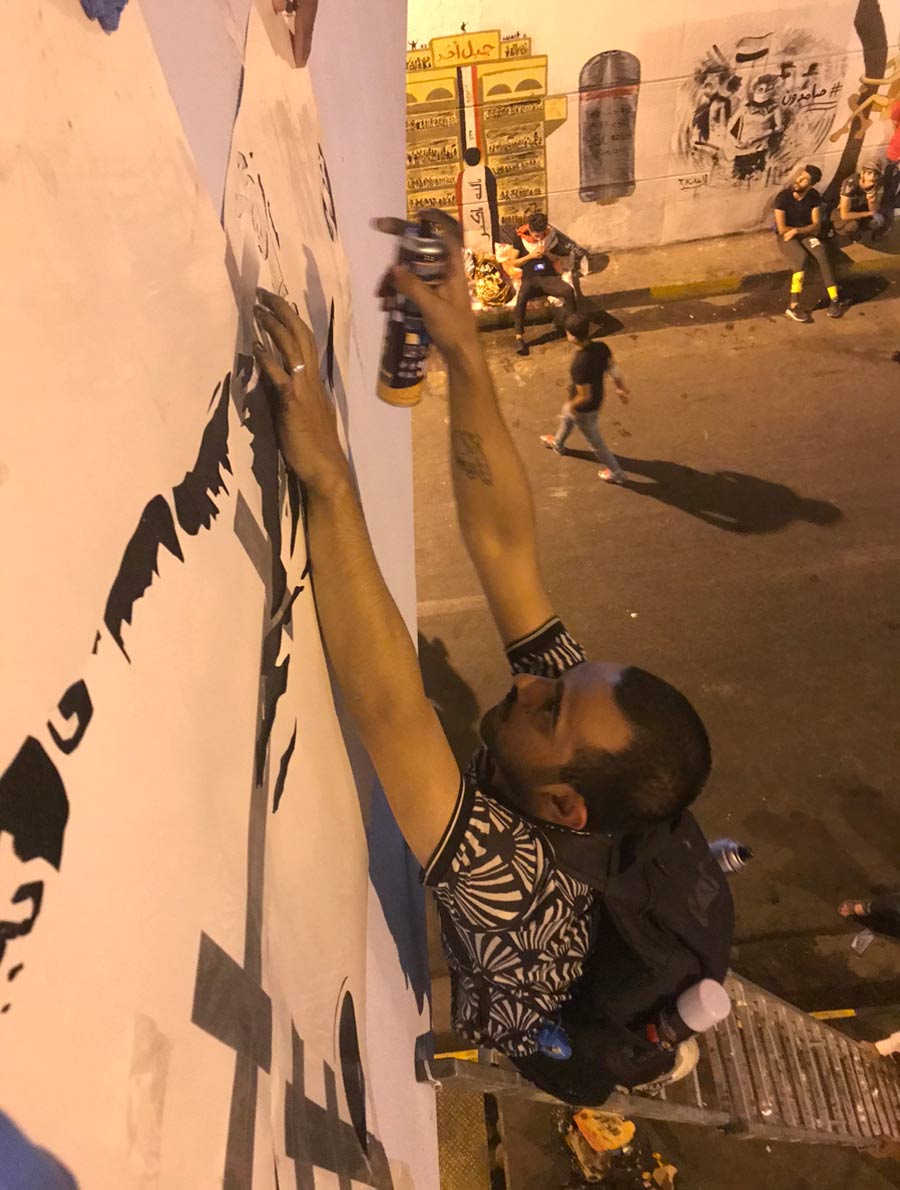
BSA: The figure with the mask looks like he is playing soccer. Is he catching a tear gas canister?
SA: The guy is a goalkeeper (“goalie”) who is trying to catch the smoking bomb. In this tunnel, a team was created to shut down the smoking bombs that came at the protesters – after getting it away from the protests in the area above the tunnel.
BSA: Why is it important to use art in the streets for you?
SA: It’s like drinking water… it’s an expression of existence. Using the art in the street is to clarify and express my ideas about the policies and social aspects of those policies. Street Art is a revolution – It’s an imperative way to share your ideas, and you should have a statement about the “system”.
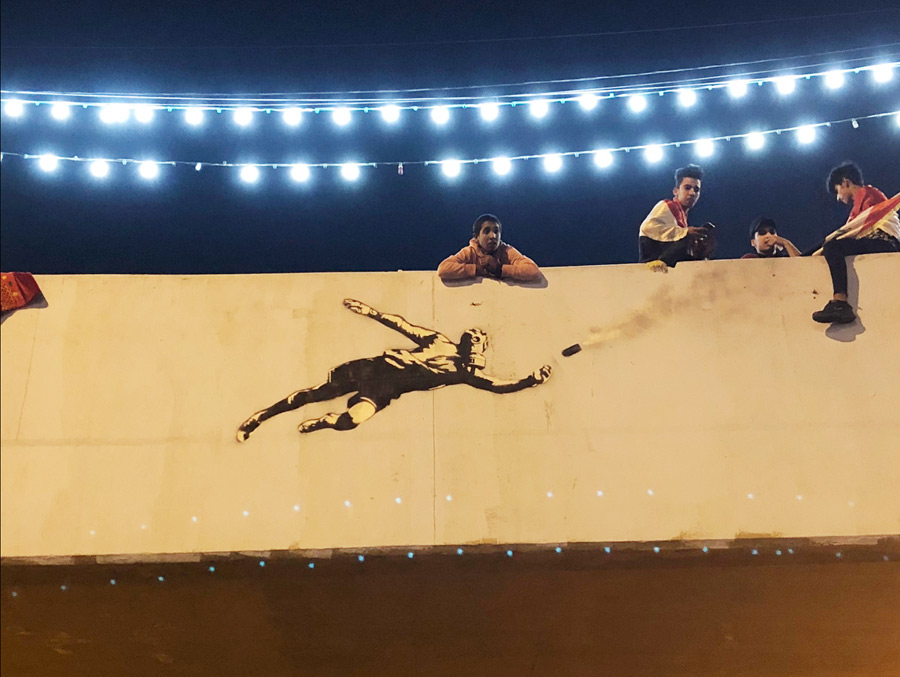
 BROOKLYN STREET ART LOVES YOU MORE EVERY DAY
BROOKLYN STREET ART LOVES YOU MORE EVERY DAY